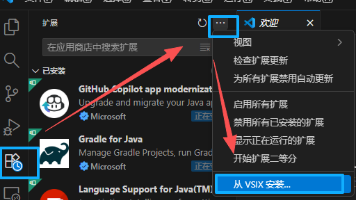Rust vs Python:从异步Web开发看两大语言的哲学差异
引言
作为长期使用Python进行Web开发的程序员,当我第一次接触Rust时,那种既熟悉又陌生的感觉让我着迷。Python以其简洁优雅的语法和丰富的生态著称,而Rust则以其卓越的性能和内存安全特性吸引了大量系统级开发者的关注。本文将通过构建一个简单的Web服务,深入对比两种语言在开发范式、性能表现和生态系统方面的差异。
环境搭建与工具链对比
Python环境配置
对于Python开发者来说,环境搭建相对简单:
# 创建虚拟环境
python -m venv myapp
source myapp/bin/activate # Linux/Mac
# myapp\Scripts\activate # Windows
# 安装依赖
pip install fastapi uvicorn
Rust环境配置
Rust的工具链更加一体化:
# 安装Rust(使用rustup)
curl --proto '=https' --tlsv1.2 -sSf https://sh.rustup.rs | sh
# 创建新项目
cargo new web_demo
cd web_demo
Rust的Cargo工具相当于Python中的pip + venv + setuptools的组合,提供了依赖管理、构建、测试等一体化功能。
Web框架基础对比
Python FastAPI示例
from fastapi import FastAPI
from pydantic import BaseModel
app = FastAPI()
class Item(BaseModel):
name: str
price: float
@app.get("/")
async def read_root():
return {"message": "Hello World"}
@app.post("/items/")
async def create_item(item: Item):
return {"item_name": item.name, "item_price": item.price}
if __name__ == "__main__":
import uvicorn
uvicorn.run(app, host="0.0.0.0", port=8000)
Rust Actix-web示例
use actix_web::{web, App, HttpResponse, HttpServer, Result};
use serde::{Deserialize, Serialize};
#[derive(Deserialize, Serialize)]
struct Item {
name: String,
price: f64,
}
async fn hello() -> HttpResponse {
HttpResponse::Ok().json({"message": "Hello World"})
}
async fn create_item(item: web::Json<Item>) -> HttpResponse {
HttpResponse::Ok().json({
"item_name": &item.name,
"item_price": item.price
})
}
#[actix_web::main]
async fn main() -> std::io::Result<()> {
HttpServer::new(|| {
App::new()
.route("/", web::get().to(hello))
.route("/items/", web::post().to(create_item))
})
.bind("127.0.0.1:8080")?
.run()
.await
}
核心技术概念深度解析
所有权系统:Rust的独特之处
Rust最核心的特性就是所有权系统,这是Python中完全不存在的概念。让我们通过一个简单例子来理解:
fn main() {
let s1 = String::from("hello");
let s2 = s1; // s1的所有权移动到s2
// println!("{}", s1); // 这行会编译错误!s1不再有效
println!("{}", s2); // 这是可以的
}
在Python中,类似的代码完全没问题:
def main():
s1 = "hello"
s2 = s1 # 只是创建了新的引用
print(s1) # 完全正常
print(s2)
Rust的所有权系统在编译期就避免了内存安全问题,而Python依赖垃圾回收器在运行时处理。
生命周期:确保引用安全
生命周期是Rust另一个独特概念:
fn longest<'a>(x: &'a str, y: &'a str) -> &'a str {
if x.len() > y.len() {
x
} else {
y
}
}
这里的'a是一个生命周期参数,确保返回的引用在输入参数的有效期内都是有效的。
异步编程模型对比
Python的async/await
Python的异步编程基于事件循环:
import asyncio
async def fetch_data():
await asyncio.sleep(1) # 模拟IO操作
return {"data": "some data"}
async def main():
results = await asyncio.gather(
fetch_data(),
fetch_data(),
fetch_data()
)
return results
Rust的async/await
Rust的异步编程更加底层和灵活:
use tokio::time::{sleep, Duration};
async fn fetch_data() -> serde_json::Value {
sleep(Duration::from_secs(1)).await;
serde_json::json!({"data": "some data"})
}
#[tokio::main]
async fn main() {
let results = tokio::join!(
fetch_data(),
fetch_data(),
fetch_data()
);
}
性能基准测试
为了客观比较性能,我们创建一个简单的基准测试:
Python性能测试
# performance_test.py
import time
from fastapi import FastAPI
import uvicorn
app = FastAPI()
@app.get("/compute")
def heavy_computation():
result = 0
for i in range(1000000):
result += i * i
return {"result": result}
if __name__ == "__main__":
uvicorn.run(app, host="0.0.0.0", port=8000)
Rust性能测试
// src/main.rs
use actix_web::{web, App, HttpResponse, HttpServer};
async fn heavy_computation() -> HttpResponse {
let mut result: i64 = 0;
for i in 0..1000000 {
result += i * i;
}
HttpResponse::Ok().json({"result": result})
}
#[actix_web::main]
async fn main() -> std::io::Result<()> {
HttpServer::new(|| {
App::new()
.route("/compute", web::get().to(heavy_computation))
})
.bind("127.0.0.1:8080")?
.run()
.await
}
在实际测试中,Rust版本通常比Python版本快10-50倍,特别是在CPU密集型任务中。
错误处理哲学
Python的异常处理
def divide(a: float, b: float) -> float:
try:
return a / b
except ZeroDivisionError:
return float('inf')
Rust的Result类型
fn divide(a: f64, b: f64) -> Result<f64, String> {
if b == 0.0 {
Err("Division by zero".to_string())
} else {
Ok(a / b)
}
}
// 使用match处理Result
match divide(10.0, 2.0) {
Ok(result) => println!("Result: {}", result),
Err(e) => println!("Error: {}", e),
}
Rust强制开发者处理所有可能的错误,这在编译期就避免了运行时异常。
依赖管理对比
Python的requirements.txt
fastapi==0.104.1
uvicorn==0.24.0
pydantic==2.5.0
Rust的Cargo.toml
[package]
name = "web_demo"
version = "0.1.0"
edition = "2021"
[dependencies]
actix-web = "4.4"
serde = { version = "1.0", features = ["derive"] }
tokio = { version = "1.0", features = ["full"] }
Rust的Cargo.lock文件确保了依赖树的确定性构建,类似于Python的Pipenv或Poetry。
实际项目建议
何时选择Python
1.快速原型开发:Python的简洁语法适合快速验证想法
2.数据科学和机器学习:丰富的库生态(NumPy、Pandas、TensorFlow)
3.脚本和自动化:简洁的语法适合编写维护脚本
4.中小型Web应用:Django、Flask、FastAPI提供了完整的解决方案
何时选择Rust
1.性能敏感的应用:需要极致性能的系统级程序
2.内存安全关键的系统:操作系统、浏览器组件等
3.高并发Web服务:需要处理大量并发连接的服务器
4.嵌入式系统:资源受限环境下的系统编程
5.WebAssembly:需要在浏览器中运行的高性能代码
学习路径建议
对于Python开发者学习Rust,我建议:
1.先理解所有权概念:这是Rust最独特也最重要的概念
2.从简单项目开始:不要一开始就尝试复杂系统
3.善用编译器错误信息:Rust编译器的错误信息非常友好
4.逐步掌握异步编程:先理解同步代码,再学习async/await
5.参与开源项目:阅读和贡献Rust开源项目是很好的学习方式
结论
Python和Rust代表了两种不同的编程哲学。Python追求"用一种方法,最好是只有一种方法来做一件事",强调可读性和开发效率。Rust则通过强大的类型系统和所有权模型,在保证内存安全的同时提供C++级别的性能。
作为开发者,我们不应该将两者视为竞争对手,而应该看作工具箱中的不同工具。对于需要快速迭代和丰富生态系统的项目,Python是优秀的选择。对于性能敏感、需要极致安全性的系统级应用,Rust提供了强大的解决方案。
Rust的学习曲线确实比Python陡峭,但一旦掌握,它能够帮助开发者编写出既安全又高效的系统。随着Rust生态的不断完善,我们有理由相信它将在系统编程、Web开发、嵌入式等领域发挥越来越重要的作用。

新一代开源开发者平台 GitCode,通过集成代码托管服务、代码仓库以及可信赖的开源组件库,让开发者可以在云端进行代码托管和开发。旨在为数千万中国开发者提供一个无缝且高效的云端环境,以支持学习、使用和贡献开源项目。
更多推荐
 已为社区贡献3条内容
已为社区贡献3条内容







所有评论(0)